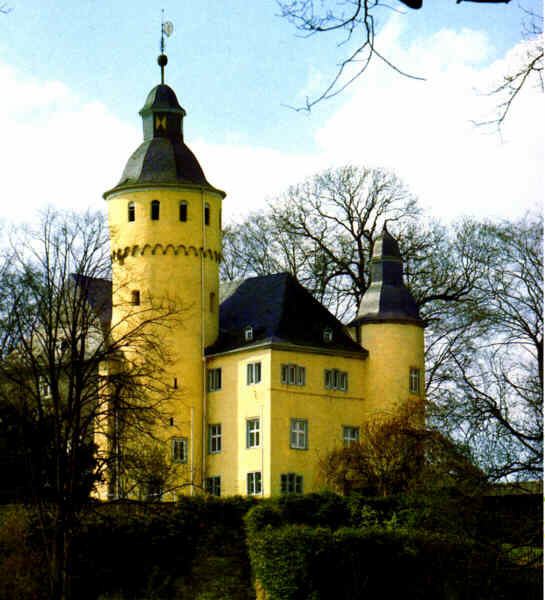Height 260 m Open tothe public Yes Materials Rubblestone Year built 1276 | Condition Fully preserved Phone +49 2293 91010 | |
 | ||
Hours Closed today MondayClosedTuesday10AM–4PMWednesday10AM–4PMThursday10AM–4PMFriday10AM–4PMSaturday10AM–4PMSunday10AM–4PM Similar Panarbora‑Park, Wiehler Tropfsteinhöhle, Freilichtmuseum Lindlar, Monkey & bird park Eckenhagen, Château de Bad Homburg | ||
Karlsberg castle homburg saar germany
Homburg Castle is an old hill castle in Nümbrecht, Oberbergischer Kreis in the German state of North Rhine-Westphalia.
Contents
- Karlsberg castle homburg saar germany
- History and construction
- Other buildings on the castle site
- Homburg Castle nature trail
- References
History and construction
The Homburg is first mentioned in records of 1276. Gottfried I of Sayn from the House of Sponheim (1247-1283/84) transferred his castrum Homburg to the German King Rudolf of Habsburg, in order to place it under his protection. He received the castle back as an inheritance. The castle was the residence of the Counts of Homburg, an imperial fiefdom (Reichsherrschaft).
From 1635 Count Ernst von Sayn-Wittgenstein altered the castle to its present-day appearance. One hundred years later the line of Sayn-Wittgenstein-Berleburg took over its management; the structure then fell into disrepair. Not until 1904 was its decline halted and, in 1926, a museum, founded by Hermann Conrad, took over the premises. Today it is the Museum of Oberbergisches Kreis.
In 1999 during an excavation, a stone keep of about 12.5 metres diameter was uncovered. Experts estimate that it dates to the 11th century. A consequence of this was that the history of the castle had to be reassessed to that time.
At the beginning of 2005 the district council decided to upgrade the castle. Their plans included inter alia the expansion of the 'Red House' (Rotes Haus) and the construction of a central cash desk and toilet area. The old orangery was to be torn down and replaced by a new two-storey administration and exhibition building.
Other buildings on the castle site
In the immediate vicinity are a sawmill and mill with a bakery. In addition, in the former farmhouse building, the 'Red House', the castle's tithe barn, is the headquarters of the Oberberg Biological Station, whose main fields of work are the scientific and practical support of the Oberberg nature reserves and various landscape conservation projects.
Homburg Castle nature trail
The nature trail was established in 2004. This is a circular walk that was the initiative of the Oberberg Biological Station and German Forest Conservation Society (Schutzgemeinschaft Deutscher Wald).
The footpath and nature trail starts at the castle and runs through Homburg Bröl and Huppichteroth, past the historic Holstein Mill and the Dicke Steine back to Homburg Castle. Nine information stations have been set up along the route which describe the natural environment around Homburg Castle and the Bröl meadow to walkers.
The stations are:
The Homburg Castle nature trail is about 2.8 km long and the walk generally takes 1.5 to 2 hours.
